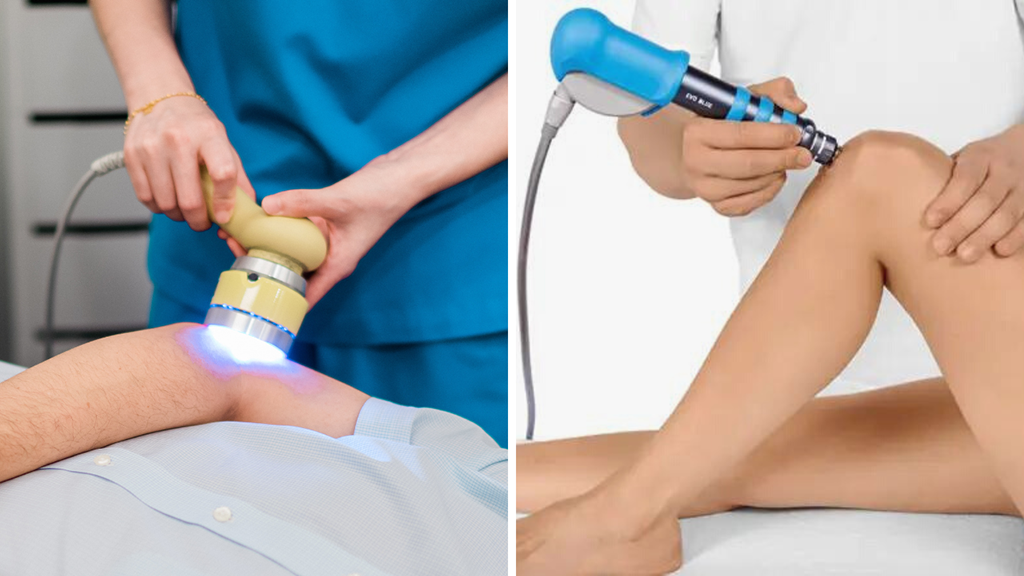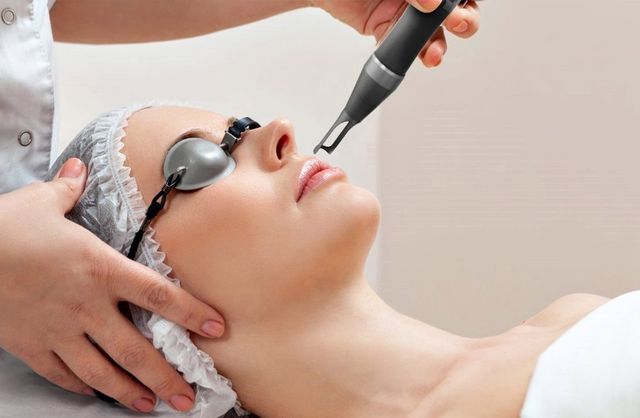Glowing Recovery: Comprehending the Mechanisms of Laser Light Therapy
Wiki Article
Discovering the Performance of Medical Laser Therapy in Recovery
Are you curious about the efficiency of clinical laser therapy in rehab? By exploring the mechanism of activity, appropriate problems, and combination into recovery programs, you can gain a deeper understanding of exactly how medical laser therapy can potentially improve recuperation.Mechanism of Action
To recognize how clinical laser treatment works, you need to recognize that it utilizes an unseen light to penetrate the skin and promote cellular activity. This unseen light is referred to as laser power. When the laser power is related to the body, it is absorbed by the cells, specifically by the mitochondria, which are the giants of the cells. This absorption of laser power triggers a series of cellular responses, leading to various therapeutic impacts.One of the key impacts of clinical laser treatment is the promo of mobile metabolic process. The laser energy boosts the mitochondria to create even more adenosine triphosphate (ATP), which is the main gas source for mobile activities. This increase in ATP manufacturing assists to improve cellular metabolic process, resulting in boosted tissue repair and regrowth.
In addition, clinical laser treatment likewise advertises the launch of different signifying particles, such as nitric oxide and prostaglandins. These molecules play vital duties in regulating swelling, pain, and other mobile procedures. By boosting the manufacturing and launch of these particles, clinical laser therapy can help minimize swelling, minimize discomfort, and speed up the recovery process.
Additionally, clinical laser therapy has actually been located to promote the production of collagen, a healthy protein that is essential for cells stamina and elasticity. The laser power boosts fibroblast cells, which are accountable for generating collagen, to enhance collagen synthesis. This increase in collagen manufacturing can aid enhance tissue honesty and advertise injury recovery.
Conditions Suitable for Laser Treatment
You can gain from clinical laser therapy for a variety of problems that appropriate for this treatment. Laser therapy has been discovered to be effective in treating musculoskeletal problems such as bursitis, tendonitis, and arthritis. By using low-level laser light to the afflicted location, laser therapy can help reduce pain, inflammation, and swelling, while promoting tissue recovery and regrowth.In addition to bone and joint problems, laser treatment can additionally be made use of to treat various types of soft tissue injuries, consisting of rips, strains, and sprains. laser light therapy. The laser light permeates deep into the tissues, boosting mobile task and speeding up the healing procedure. This can lead to faster recuperation times and improved end results
Additionally, laser therapy has revealed appealing outcomes in the therapy of chronic discomfort problems such as fibromyalgia and neuropathy. The laser light helps to minimize discomfort signals and promote the release of endorphins, which are all-natural pain relievers created by the body. This can offer long-lasting alleviation and boost total lifestyle.
It is worth keeping in mind that laser treatment is a drug-free and non-invasive treatment option, making it a safe alternative for those that may not be suitable candidates for various other forms of treatment. It is crucial to consult with a certified medical care expert to establish if laser therapy is the right choice for your certain condition.
Benefits of Clinical Laser Therapy
One major advantage of clinical laser therapy is its ability to provide reliable and targeted pain relief for a wide array of problems. Whether you're experiencing from chronic discomfort, severe injuries, or even post-surgical discomfort, clinical laser treatment can supply significant relief.An additional advantage of medical laser therapy is its non-invasive nature. In addition, laser treatment is virtually painless and does not require any kind of downtime, allowing you to resume your regular activities instantly after the session.
Moreover, medical laser treatment has been located to accelerate the healing process. By increasing blood flow and oxygenation in the cured area, laser treatment advertises tissue repair and regeneration.

Research Findings on Performance
Just how effective is medical laser treatment in rehab? Countless research studies have been conducted to assess the performance of this treatment technique. The findings suggest that medical laser treatment can be extremely effective in advertising healing and minimizing discomfort in numerous rehab settings.One research study carried out on individuals with chronic neck pain found that clinical laser therapy led to substantial decreases in discomfort and boosted array of movement contrasted to a control group. A research study on individuals with osteo arthritis of the knee revealed that laser therapy resulted in lowered discomfort and enhanced physical feature.
Furthermore, research study on athletes with sports-related injuries demonstrated that clinical laser therapy sped up the recovery procedure and enabled quicker return to sporting activities activities. In enhancement to reducing discomfort and advertising healing, laser therapy has also been found to have favorable effects on swelling and cells fixing.
It is very important to note that the effectiveness of medical laser treatment can vary depending on the particular problem being treated and specific client variables. In general, the research study searchings for suggest that clinical laser treatment can be a valuable tool in the recovery procedure, giving significant advantages to people in terms of discomfort decrease and improved feature.
Integrating Laser Therapy Into Rehab Programs
To incorporate laser treatment right into rehabilitation programs, think about including it as a vital part to boost individual results. Laser treatment has actually shown promising lead to enhancing discomfort management, minimizing inflammation, and speeding up cells fixing. By integrating laser therapy into rehab programs, you can provide individuals with a non-invasive and drug-free treatment choice that complements various other treatments such as exercise therapy and handbook strategies.One method to include laser therapy is by including it in the initial evaluation and therapy preparation process. Assess the individual's problem and identify locations where laser therapy can be valuable. If a client is experiencing persistent pain in their knee joint, laser therapy can be utilized to alleviate and target the affected location pain.
In addition, laser therapy can be used as a pre-treatment method to prepare the person for various other rehab treatments. It can help in reducing pain and inflammation, making it much easier for individuals to endure and benefit from workouts or hands-on treatment techniques.
Furthermore, think about incorporating laser treatment into the overall therapy plan by organizing normal laser treatment sessions together with other rehab treatments. This will make certain regular direct exposure to laser therapy and optimize its prospective advantages.

Final Thought
To conclude, medical laser treatment has actually verified to be a useful and efficient therapy choice in rehab programs. Its device of activity targets certain areas, offering targeted pain alleviation and promoting cells healing. Research study findings support its effectiveness in various problems, making it an appropriate option for people looking for non-invasive treatment. By integrating laser therapy into recovery programs, medical care professionals can boost client results and enhance overall healing.By boosting the production and release of these molecules, clinical laser therapy can assist lower swelling, reduce pain, and accelerate the recovery procedure.

One significant benefit of clinical laser treatment is its ability to supply efficient and targeted discomfort relief for a large array of problems. The findings suggest that clinical laser treatment can be very effective in laser light therapy advertising recovery and minimizing discomfort in numerous rehabilitation setups.
By incorporating laser treatment right into rehab programs, you can give clients with a drug-free and non-invasive treatment choice that complements various other treatments such as workout treatment and manual techniques.
Report this wiki page